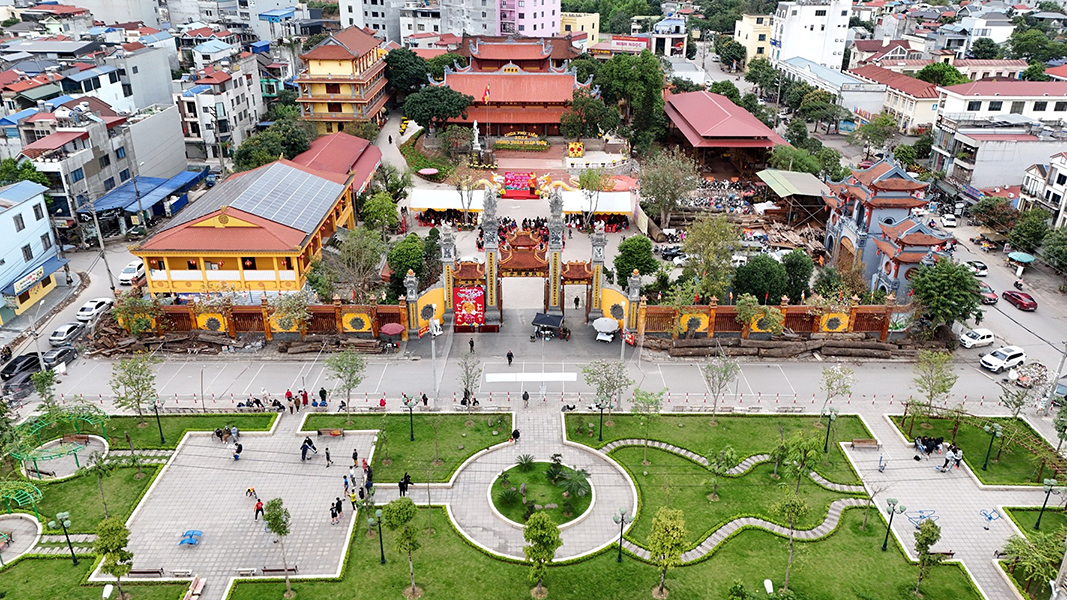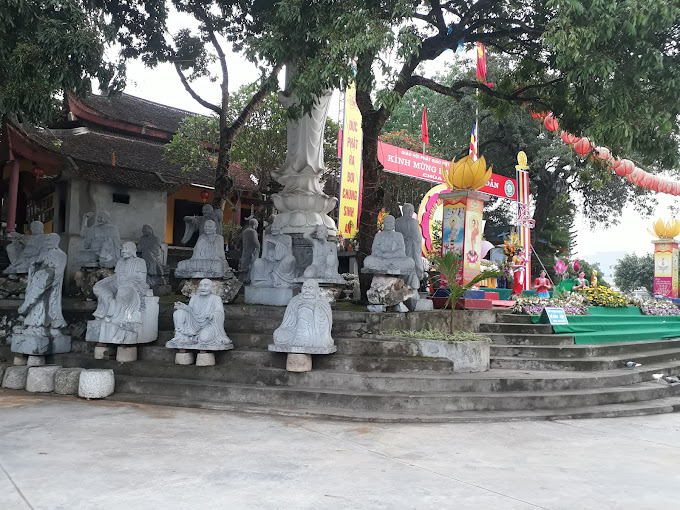Phu Lien Pagoda
1. Overview
Phu Lien Pagoda (Vietnamese: Chùa Phù Liễn) is one of the most renowned and historically significant Buddhist temples in Thai Nguyen Province, Northern Vietnam. Situated on a peaceful hill in Hoang Van Thu Ward, right in the center of Thai Nguyen City, the pagoda serves as a cultural and spiritual landmark with deep roots in Vietnamese history and Buddhism.
2. Historical Background
Phu Lien Pagoda was originally constructed during the Ly Dynasty (11th–13th century), a time when Buddhism was the dominant spiritual force in Vietnam. Over the centuries, the temple has been restored and expanded multiple times, reflecting the continuous devotion of local people and the importance of Buddhism in the region.
According to local records and legends, the pagoda was built on a hill that was once believed to have sacred energy. Throughout the French colonial period and during wartime, the temple also served as a place of refuge and spiritual strength for many patriots and monks.
3. Architectural Features
The architecture of Phu Lien Pagoda blends traditional Vietnamese Buddhist style with regional characteristics. Highlights include:
-
A main hall (chính điện) with a curved tiled roof and wooden beams, housing large statues of Shakyamuni Buddha, Avalokitesvara (Quan Âm), and other bodhisattvas.
-
An ancient three-entrance gate (tam quan) built in classical design, symbolizing the path to enlightenment.
-
Stupas and stone towers in the courtyard that hold relics and ashes of respected monks.
-
A bell tower and drum tower, both used in Buddhist ceremonies and rituals.
-
Quiet garden areas with bonsai trees, lotus ponds, and incense offerings.
The entire temple complex is designed to provide a peaceful space for meditation, worship, and spiritual reflection.
4. Cultural and Religious Importance
Phu Lien Pagoda is considered the spiritual center of Thai Nguyen City. It plays a vital role in:
-
Hosting Buddhist festivals, especially on major days like Vesak (Buddha’s Birthday) and Vu Lan (Ancestor Gratitude Festival).
-
Offering Dharma talks, prayer sessions, and community activities.
-
Serving as a center for charity events, including food and clothing distribution to those in need.
Monks at Phu Lien Pagoda also teach about Buddhist philosophy, morality, and compassion, making the temple not just a place of worship but also of education and ethical guidance.
5. Visiting Information
-
Location: Hoang Van Thu Ward, Thai Nguyen City, Thai Nguyen Province
-
Opening Hours: Open daily, usually from early morning until evening
-
Entrance Fee: Free (donations welcomed)
-
Best Time to Visit: During festivals or in the early morning for a quiet, serene atmosphere
-
Recommended for: Cultural tourists, Buddhists, historians, and photographers
6. Conclusion
Phu Lien Pagoda is more than just a religious site—it is a symbol of cultural identity, spiritual devotion, and historical continuity in Thai Nguyen. With its rich history, elegant architecture, and active role in community life, the temple stands as a must-visit destination for anyone seeking to understand Vietnam’s northern spiritual heritage.



